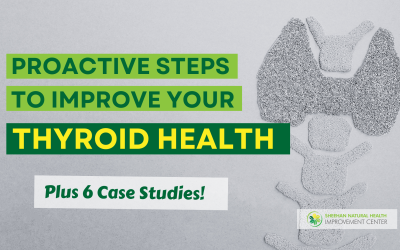Chronic Pain
As a chiropractor, the most common reason why people come into my office is in chronic pain. For example: headaches, neck pain, shoulder pain, low back pain, leg pain, migraines–we see it all day every day.
What Causes Chronic Pain?
Well…Let’s Get a Little Technical.
When I was in chiropractic school, we were taught that the vast majority of pain was caused by what is called a subluxation—a slight misalignment of the bones in the spine. A subluxation is less than a complete dislocation. But it is enough press on the nerves coming out of the spine and cause pain. We were also taught that these nerves would be pinched going elsewhere in the body, causing other dysfunction in the body and its organs.
The Somato-somatic Reflex
This cycle of where a subluxation pinches the nerves that go to the structures in the body is called somato-somatic pain. “Somato-“ means body. So “somato-somatic pain” means from the body to the body. It’s a case where a pinched nerve causes pain in the body. We were taught that this was the most common cause of pain.
Well I think this was true over 30 years ago. But a curious thing started happening about 40 or 50 years ago. What was that thing? If you answered, “We started gaining weight at an accelerated rate and started becoming unhealthier,”—you’re right! Now here’s the rub. It’s not just a simple case of: lose weight, and you’ll feel better. You see, there are a lot of stressors, toxins, and toxic food that are making us unhealthy and gain weight. We have the cycle reversed. In order to lose weight, we have to get healthy first. We can’t get healthy by just trying to lose weight.
The Most Common Cause of Chronic Pain
aka The Viscero-somatic Reflex
This brings me to my next point about pain. Remember that I said that we were taught as chiropractors that most pain was called a somato-somatic reflex? Well, there is also what is called a “viscerosomatic reflex”. What is a “viscerosomatic reflex”? Well, “visceral” means organ and “somatic” means body. So a viscerosomatic reflex means an organ causing pain in the body. In other words, the stresses in our environment and our food are not only causing us to gain weight, they are also stressing our organs, and causing chronic pain. Right now in my practice, it seems that about 50% of pain is caused by somato-somatic reflexes, and the other 50% is caused by viscerosomatic reflexes.
Why Don’t More People Know About The Cause of Chronic Pain?
The problem is, even though the concepts of somato-somatic and viscerosomatic pain are taught in chiropractic and medical and medical school, they are largely ignored by both. Why is that? Well, there’s there are a number of reasons.
One—even though it is taught to us in school, what to do about it is not taught. It’s like teaching a plumber to find electrical problem who knows nothing about electricity. Obviously the plumber is only going to want to look for plumbing problems.
Two—since most of medicine is now based on lab tests, MRIs, CT scans, and the like, most viscerosomatic reflexes are missed by these diagnostic methods until it is too late.
Three—viscerosomatic reflex treatment is not covered by health insurance.
Four—correction of pain from viscerosomatic reflexes involves lifestyle changes. Yes, I mean changing the diet, exercising, and stress reduction. In our fast-paced society, we want answers and we want them now, we don’t want to have to wait for them to work. Fortunately or unfortunately, that is exactly what we must do.
Now that you know the difference between somato-somatic, and viscerosomatic reflexes, what are some examples?
How Can Reflex Chronic Pain Affect You?
Chronic Pain On the Right Side of the Body, for Starters
Liver and gallbladder stress consistently cause pain in the neck, between the shoulder blades, the right shoulder, the right arm, the right low back, the right hip, and even sometimes the right knee. Heart stress can cause pain most commonly in the neck, left shoulder and arm. And large intestine stress typically causes pain in the low back and hips.
Chronic Mid-Back, Low Back, and Hip Pain
Small intestine stress typically causes pain in the mid back. Stomach stress typically causes pain in the mid back. Kidney stress typically causes pain in the low back, hips, and knees. Ovarian stress, and hormonal stress, typically causes pain in the hips and knees.
Chronic Upper Back, Neck and Arm Pain
Thyroid stress typically causes pain in the neck, upper back, and especially left arm. Immune stress can cause pain in any joint in the body. In fact, I’ve heard several doctors say that chronic immune stress is the most common cause for joint pain.
Vitamin And Mineral Deficiencies Contribute to the Viscero-Somatic Reflex and Cause Chronic Pain
In this discussion of viscerosomatic reflexes, I would be remiss without mentioning that vitamin and mineral deficiencies can also cause pain in the body. The number of people who are magnesium, calcium, or potassium deficient and experience pain as a result is astronomical.
Examples of Chronic Pain Caused by Reflexes
I’m going to use myself as an example. In the past, I’ve experienced both somato-somatic pain, and viscerosomatic pain. When I was 17, I was playing soccer, leaned forward to catch my breath, heard a loud pop in my back, and experienced such pain that I dropped to my knees. I couldn’t get up. Eventually, I did get up, but was in terrible pain. When I got home, I took painkillers, and went to bed, thinking that pain killers got rid of pain. I woke up in the morning feeling worse.
Eventually, I went to go see the chiropractor, who adjusted my lower back, and I immediately felt better. This was my first introduction to chiropractic, and was my inspiration to become a chiropractor.
Fast forward four years, and while I was on vacation in Mexico, I got salmonellosis, and as a result, really sick. Shortly thereafter, I experienced severe abdominal bloating, fatigue, and severe left low back pain. I went to the chiropractor, and he did not help. Then I went into chiropractic school, thinking that someone there could help me. I was adjusted by students, teachers, even the dean of clinics. But none of that helped.
So What Was Going On?
You see, I still had an intestinal infection that was causing stress on my large intestine. Only through diet change was able I to kill this infection. Once I completely changed my diet, the pain was gone within days. This is the reason I started to specialize in nutrition therapy.
More Examples of Chronic Reflex Pain
Example 1 – Hip and Back Pain Caused by Blood Sugar and Adrenal Stress
Let me give you another couple of examples of viscerosomatic reflexes. So about three weeks ago a woman came into my office complaining of hip and back pain. It was so severe that she could barely walk, and she was rightly very concerned. Since she came in for chiropractic care, I proceeded to adjust her three times a week for a couple of weeks. There was no improvement.
Because she didn’t improve with chiropractic adjustments, I suspected that perhaps she had a viscerosomatic reflex instead of a pinched nerve. Using Nutrition Response Resting and functional blood chemistry, I found that she had adrenal weakness and blood sugar issues. I informed her of this, gave her a supplement to support her adrenal glands, and a special diet to help her balance her blood sugar. She immediately improved, and now, two weeks later, she’s 70% better. I expect her to experience a full recovery.
Example 2 – Neck and Left Shoulder Pain Caused By Thyroid Stress
About a year ago, I had a woman come into my office because her ceiling fell on her while sleeping. I kid you not–her ceiling fell on her. As an aside, what makes this case even weirder, is that one of her neighbors also had their ceiling fall on them and they had also found their way to my office. This job is certainly never boring!
First, I told her to move and find another apartment. Then I used chiropractic to help her. She had had pain all over her body, which almost all responded to chiropractic care. However she still experienced severe pain in her neck and left shoulder and arm. Using Nutrition Response Testing and functional blood chemistry, I saw that she had stress on her thyroid. When I informed her of this, she confided in me that she actually had a small benign tumor on her thyroid. But instead of handling this with diet and nutritional therapy, this woman instead opted to have this tumor cut out.
Last week, a month after the surgery, she informed me that 80% of the pain in the neck, shoulder, and left arm is now better. Hopefully she will get on a proper nutrition and diet program to help her support her thyroid. Even though surgery has given her relief at this time, only by supporting the stressed organ will her improvement be permanent, and prevent future chronic pain.
Talk to a Practitioner
Before you take the leap to get started, see if we can help you first! Sign up for a free 15-minute phone consultation and talk with a practitioner to learn if this unique program is right for you.
Read more about Chronic Pain
Proactive Steps to Improve Your Thyroid Health (Plus 6 Case Studies!)
Table of Contents1. Understanding Your Thyroid2. How Low Thyroid Function Affects the Body3. Reduce Your Exposure to Toxins4. Avoid Foods You Are Sensative To5. Support Your Immune System6. Optimize Your Liver and Gallbladder Function7. Rule Out Scar Interference8....
The Page Diet: The Most Effective Diet For Overall Health
What is the Healthiest Diet? If you have been a patient of ours, you probably know there are many dietary strategies that can work very well to get you healthier and feeling better. The best diets out there minimize or eliminate processed foods and stress regular...
12 Signs You Have A Weak Immune System: Some May Surprise You
In our continued effort to help everyone keep their immune system strong, I decided to write a blog on signs you have a weak immune system. Some of these may surprise you and answer questions about symptoms that you or a loved one may have. 1. You Have Digestive...
Natural Approach to Rheumatoid Arthritis
There is a Natural Approach to Rheumatoid Arthritis. Read on to compare the conventional medical and natural approaches to rheumatoid arthritis. (Demographics for this article and statistics about rheumatoid arthritis for this article are taken from...
Opioids Vs. Natural Solutions
"Overall the results indicate that the medical profession is doing a poor job of appropriately prescribing opioid painkillers. Even though the rates have leveled off, we have a long way to go in improving medical care so these are not as overprescribed as they are...
Chronic Pain: Migraines
Facts about migraines: Migraine is one of the most common health conditions in the world—more prevalent than diabetes, epilepsy, and asthma combined. A little less than 15 percent of the world’s population suffers from migraines. An observational study recently found...
Musculoskeletal Issues
Musculoskeletal Issues: So recently I’ve been fine-tuning my treatment of musculoskeletal issues with nutrition. In the past (like in chiropractic, medical, and physical therapy school), we’ve been taught that people’s aches and pains were strictly...
An Effective, Holistic Approach to Overcoming Fibromyalgia
November 5, 2015, Laura Sheehan An Effective, Holistic Approach to Overcoming Fibromyalgia If you suffer from fibromyalgia, chronic pain, fatigue, sleeplessness, and other symptoms are part of your everyday life. Your symptoms take over your life, and for some, even...
Carpal Tunnel Syndrome: A Non-Surgical Approach
Carpal Tunnel Syndrome: A Non-Surgical Approach to Treating This Manual Condition Carpal Tunnel Syndrome is a common condition affecting an estimated 4 to 10 million Americans. Characterized by tingling, pain or numbness in the hands, wrists or fingers, carpal...
Talk to a Practitioner
Before you take the leap to get started, see if we can help you first! Sign up for a free 15-minute phone consultation and talk with a practitioner to learn if this unique program is right for you.



